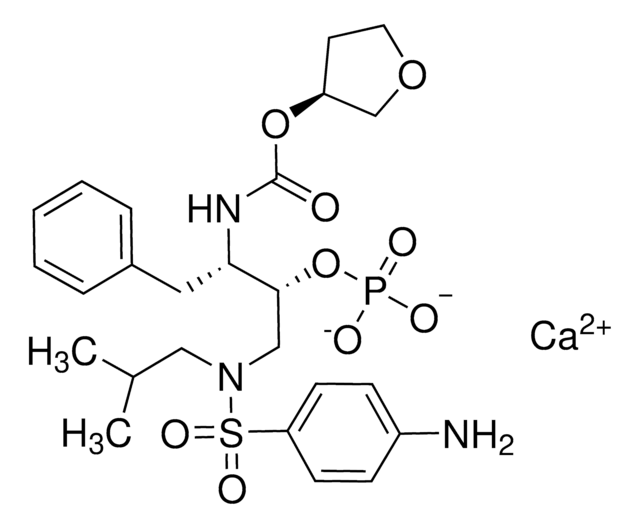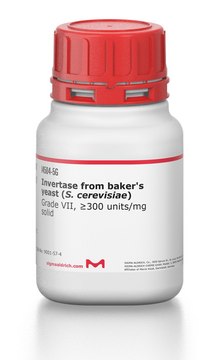P8398
Phospholipase D from cabbage
Type IV, lyophilized powder, ≥100 units/mg solid
Synonyme(s) :
Lecithinase D, Phosphatidylcholine phosphatidohydrolase, Phospholipase D from white cabbage
Se connecterpour consulter vos tarifs contractuels et ceux de votre entreprise/organisme
About This Item
Produits recommandés
Type
Type IV
Niveau de qualité
Forme
lyophilized powder
Activité spécifique
≥100 units/mg solid
Composition
Protein, ~25%
Température de stockage
−20°C
Vous recherchez des produits similaires ? Visite Guide de comparaison des produits
Description générale
Phospholipase D (PLD) from cabbage comprises the C2 domain, PLD superfamily specific conserved regions (I–IV) with HxKx4Dx6GSxN (HKD) motif. Structurally, it is a barrel-shaped monomer bound to calcium ions.
Application
Phospholipase D (PLD) is used to hydrolyze the phosphate bonds of phospholipids and sphingomyelin to give the corresponding phosphatidic acid. It has also been used to study metabolic labeling and direct imaging of choline phospholipids in vivo by measuring propargyl-Cho incorporation. Furthermore, PLD is used in purification and kinetic studies.
The enzyme has been used for the preparation of Bodipy-phosphatidylcholine during the preparation of fluorescently labelled lipids.
Actions biochimiques/physiologiques
Hydrolyzes the phosphate bonds of phospholipids and sphingomyelin to give the corresponding phosphatidic acid.
Phospholipase D from cabbage is widely used in biocatalytic transphosphatidylation reactions.
The amino acid sequence of cabbage PLD has 83% and 80% identity with Arabidopsis PLDα and castor bean PLD. It hydrolyzes the phosphate bonds of phospholipids and sphingomyelin to give the corresponding phosphatidic acid.
Définition de l'unité
One unit will liberate 1.0 μmol of choline from L-α-phosphatidylcholine (egg yolk) per hr at pH 5.6 at 30 °C.
Remarque sur l'analyse
Protein determined using biuret.
Inhibiteur
Réf. du produit
Description
Tarif
Mention d'avertissement
Danger
Mentions de danger
Conseils de prudence
Classification des risques
Resp. Sens. 1
Code de la classe de stockage
11 - Combustible Solids
Classe de danger pour l'eau (WGK)
WGK 3
Équipement de protection individuelle
Eyeshields, Gloves, type N95 (US)
Faites votre choix parmi les versions les plus récentes :
Déjà en possession de ce produit ?
Retrouvez la documentation relative aux produits que vous avez récemment achetés dans la Bibliothèque de documents.
Les clients ont également consulté
Notre équipe de scientifiques dispose d'une expérience dans tous les secteurs de la recherche, notamment en sciences de la vie, science des matériaux, synthèse chimique, chromatographie, analyse et dans de nombreux autres domaines..
Contacter notre Service technique














